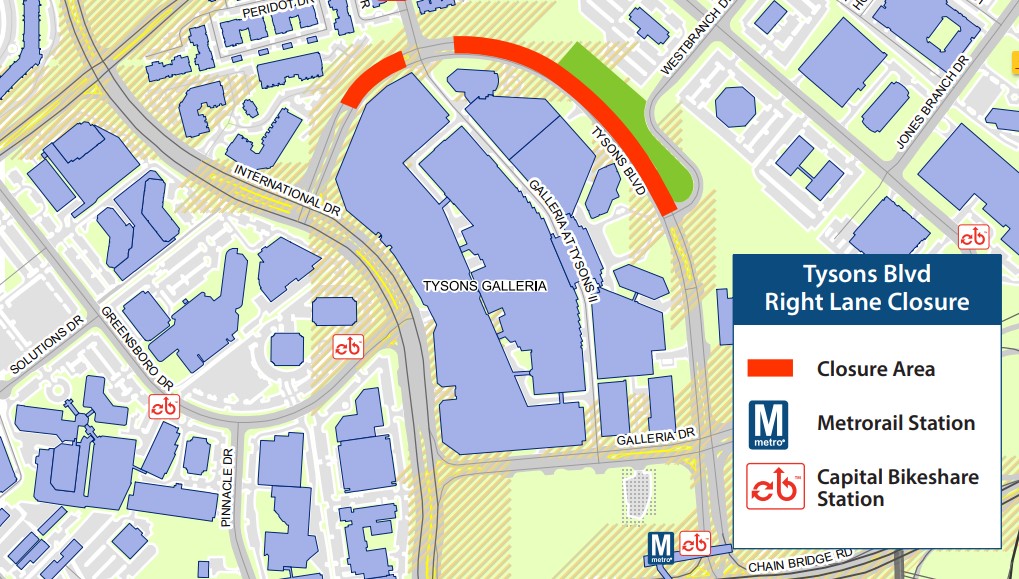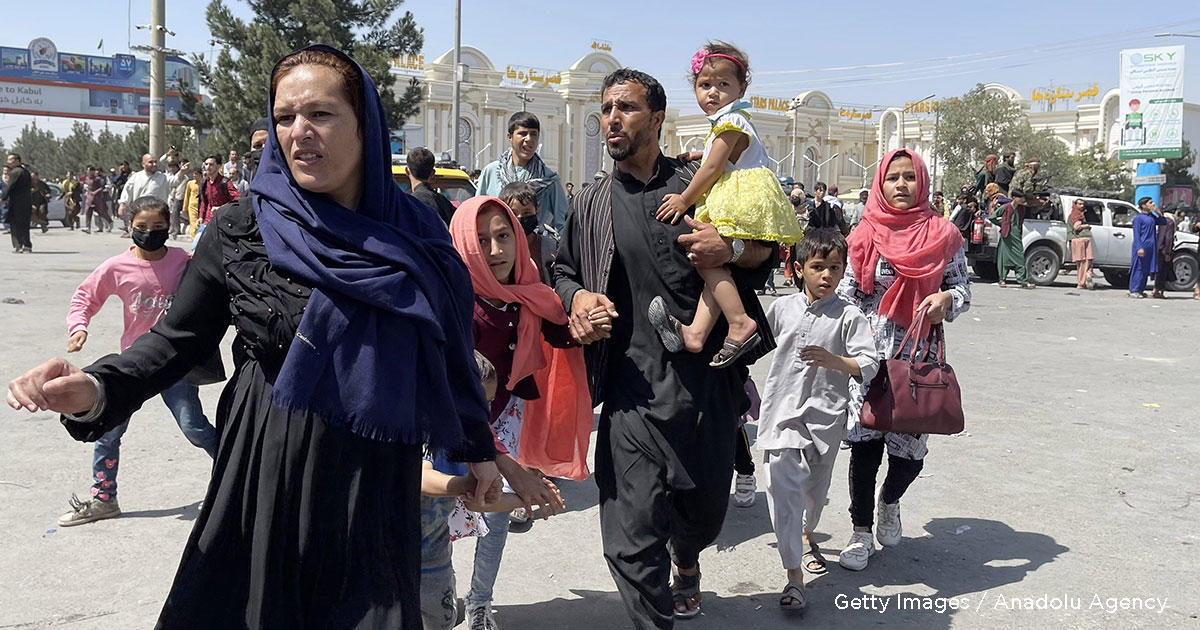
With the desperate situations in Afghanistan and Haiti, many are asking how they can help people in Afghanistan and Afghan refugees, as well as the people of Haiti struggling to recover from the recent devastating earthquake. The following list of resources has been compiled from suggestions offered by Tysons Interfaith contributors:
FOR AFGHANISTAN
LUTHERAN SOCIAL SERVICES: The leading resettlement agency resettling refugees in the DMV area that is already in the process of resettling hundreds of recently arrived Afghan Special Immigrant Visa (SIV) holders, working with local nonprofit groups — they need financial donations, volunteers for apartment setup, transportation, tutoring, advocacy, and more. See https://lssnca.org/take_action/afghan-allies.html
LUTHERAN IMMIGRATION AND REFUGEE SERVICES: See https://www.lirs.org/
CATHOLIC CHARITIES DIOCESE OF ARLINGTON COUNTY: Doing work in the DMV. See https://www.ccda.net/need-help/immigrants-and-refugees/migration-and-refugee-services/
ETHIOPIAN COMMUNITY DEVELOPMENT COMMISSION: Also doing work in the DMV. See https://www.ecdcus.org/
HIAS: formerly known as the Hebrew Immigrant Aid Society, HIAS has been working in the U.S. and around the world for 130 years on refugee resettlement and advocacy — now seeking financial assistance, advocates, and volunteers to provide housing for newly arrived Afghan families. See https://www.hias.org/crisis-afghanistan-how-you-can-help
INTERNATIONAL RESCUE COMMITTEE: another leading refugee resettlement agency, resettling refugees in the Baltimore area and elsewhere in the U.S. and around the world – see https://help.rescue.org/donate/afghanistan
DOCTORS WITHOUT BORDERS: providing medical care for the neediest people in the toughest places around the world, including 5 still-operating projects in Afghanistan – see Afghanistan | How to Help & FAQs | Doctors Without Borders
NO ONE LEFT BEHIND: the only nation-wide association of wartime allies in the US dedicated to ensuring that America keeps its promise to our interpreters from Iraq and Afghanistan, now trying, among other things, to charter planes to rescue Afghan refugees. See https://nooneleft.org/default.aspx?
INTERNATIONAL REFUGEE ASSISTANCE PROGRAM ( IRAP): a leading organization, headquartered in New York, involved in litigation and advocacy on behalf of refugees across the United States. See https://refugeerights.org/
WOMEN FOR WOMEN INTERNATIONAL: https://support.womenforwomen.org/donate/afghanistan-emergency-2x-match?src=HHUA21082A
CHURCH WORLD SERVICE: another leading refugee resettlement agency, run by U.S. churches for over 70 years, involved in advocacy as well as refugee resettlement around the world. See https://cwsglobal.org/learn/refugees-and-immigrants/
FOR HAITI
Many faith-based organizations are sending resources to Haiti, so you may wish to check with your local faith-based organization for additional information.
Also, the following NPR article explains precautions to take when donating and provides links to lists of organizations doing work in Haiti. https://www.npr.org/2021/08/17/1028421310/haiti-earthquake-how-to-help.

This blog post is the expressed opinion of its writer and does not necessarily reflect the views of Tysons Interfaith or its members.
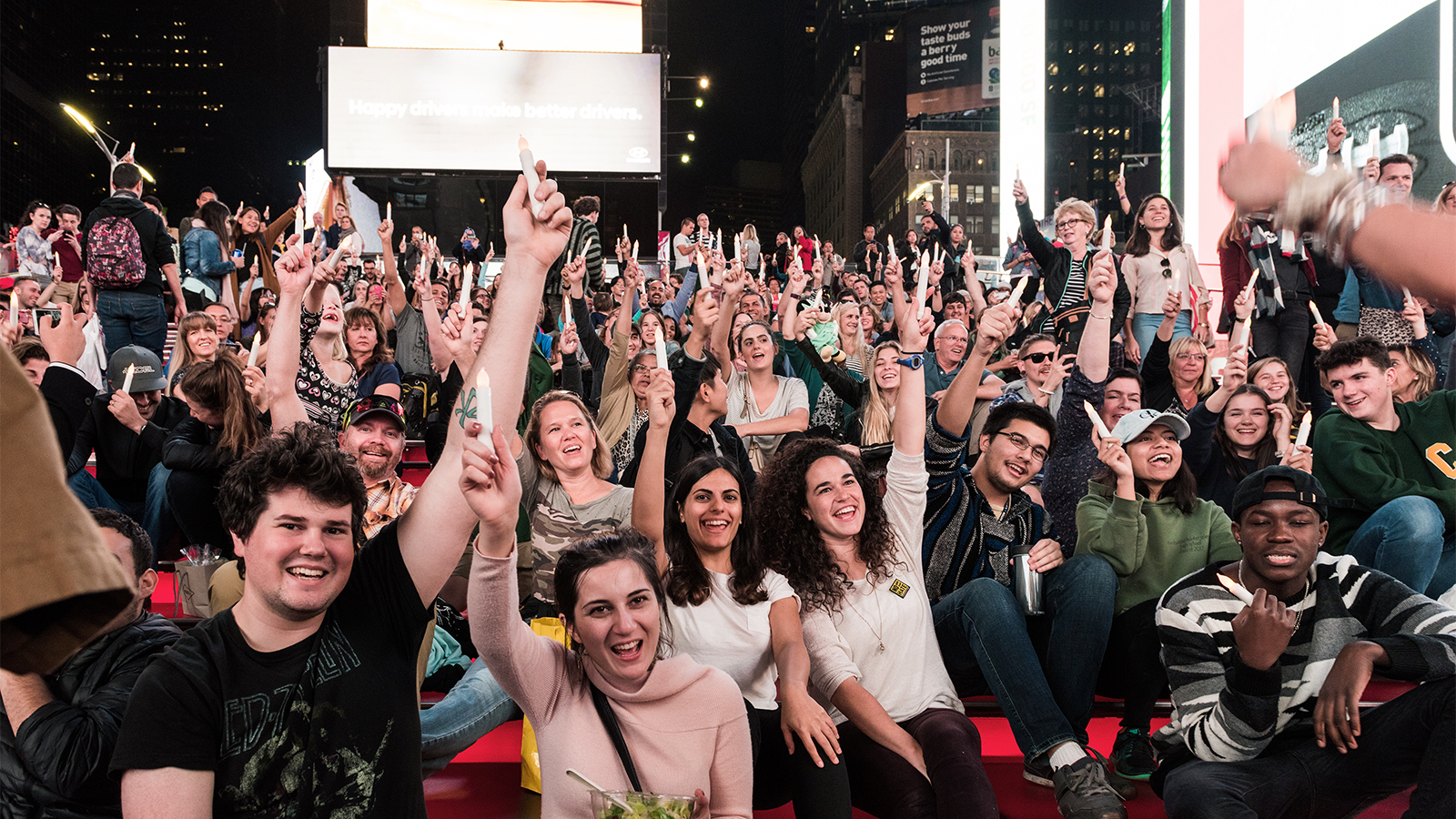
A recent survey of religion in America provides some granularity when it comes to the so-called decline in religiosity in these United States. Survey: White Mainline Protestants Outnumber White Evangelicals
The data show that contrary to other research, the percentage of Americans identifying with formal denominations is on a rebound from a low in 2018. Is this good news? Well, there’s a lot to be said for maintaining a skeptical attitude about formal religion. And yet, at the same time, this modest (re)turning to organized religion may be a response to the spiritual void that “mass society” represents.
Philosopher, and deeply agnostic, Hannah Arendt, summed up “mass society” thus:
All of the features, however, that mass psychology has by now identified as typical of man in mass society: his abandonment (Verlassenheit—and this abandonment is neither isolation nor solitude), along with his utmost adaptability; his irritability and lack of support; his extraordinary capacity for consumption (if not gluttony), along with his utter inability to judge qualities or even to discern them; but most of all his egocentrism and the fatal alienation from the world that he mistakes for self-alienation (this, too, dates back to Rousseau)—all of this first manifested itself in “good society,” which does not have a mass character. The first people of the new mass society, one might say, constituted a mass to such a small degree (in a quantitative sense) that they were actually able to consider themselves an elite.
One could argue that, with a few exceptions in Northern Europe, Americans represent the elites of the world. We are enmeshed in the ills outlined in this dense paragraph from Arendt’s critique of mass society, and it is natural to crave for some sort of spiritual solace. Most of us in Tysons Interfaith would probably quibble with the word “solace,” because that seems like a psychological cop out. Our faith traditions emphasize the Platonic world view that ideals, like good and evil, are real.
I believe that the beauty of religious worship is its communality. Megachurches excepted, most worship takes place in an intimate setting where loving relationships can be forged between individuals of different backgrounds and tendencies. This is what I experience in my faith community and with my participation in Tysons Interfaith. If you want to read about communality in action, I recommend to you the life of Gordon Crosby, who bucked the trend of bigness and put social responsibility front and center in his theology. Rebel pastor Gordon Cosby left lasting mark on mainstream Christianity – The Washington Post.
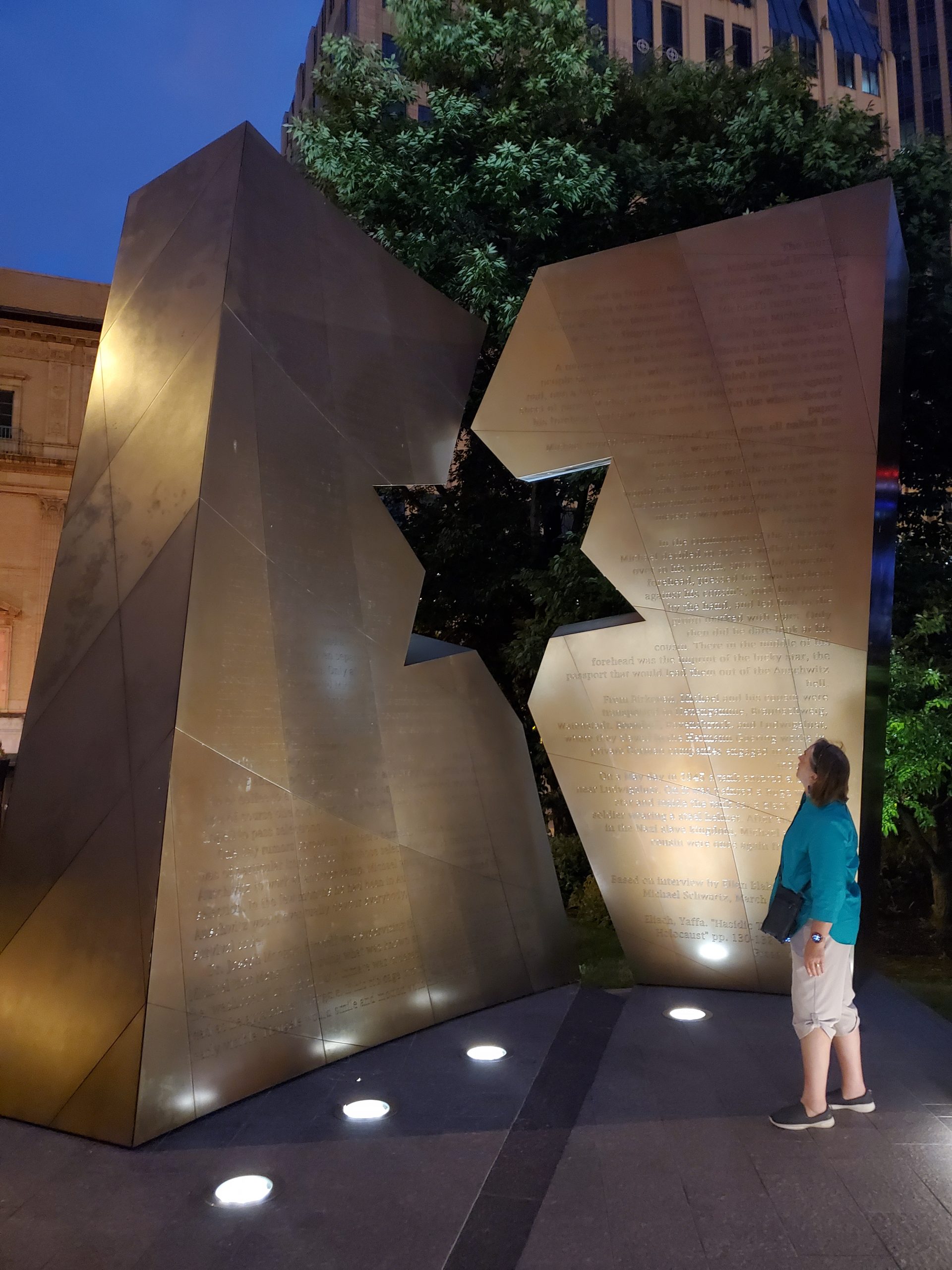
On a recent road trip to the west, we stopped in Columbus, Ohio. Among other things, we saw the Ohio Capitol building, which was beautiful and distinctive, especially at night. [Interesting fact – You might think they didn’t finish the dome, but the horizontal top was on purpose, to reflect the Greek Revival style to honor the Greek concept of democracy, whereas domes are more Roman style.]
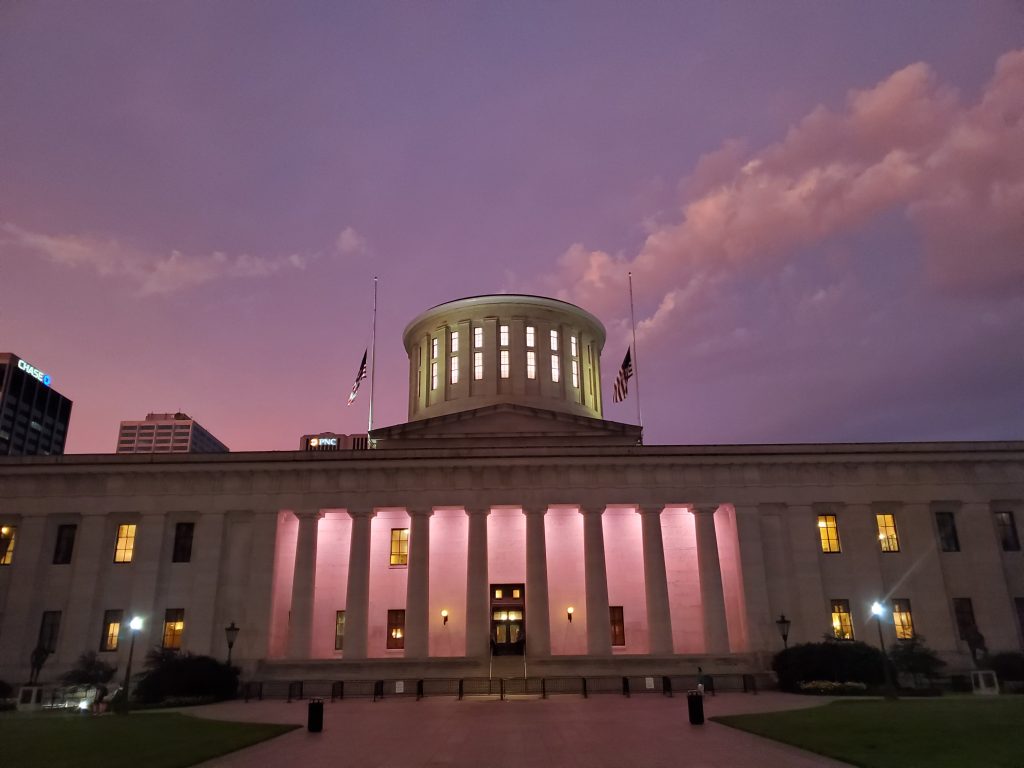
One thing we didn’t expect was a Holocaust and Liberators Memorial on the Capitol grounds. Apparently during a Holocaust remembrance ceremony several years ago, the governor was so moved he said the state needed a more formal Holocaust Memorial, so one was commissioned. It is solemn and powerful, as you can see from the pictures (we thought particularly moving at night).
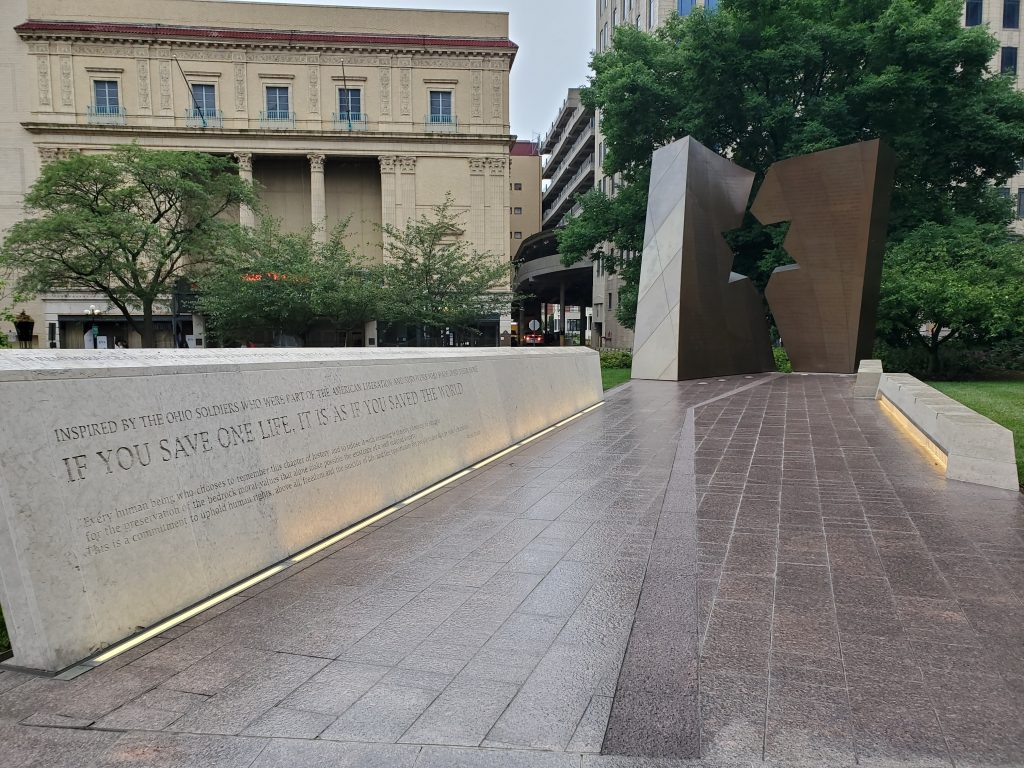
The memorial speaks for itself, but we were particularly inspired by the timeless quotes on the marble wall leading to the monument:
“If you save one life, it is as if you saved the world.”
“Every human being who chooses to remember this chapter in history and to infuse it with meaning is thereby choosing to struggle for the preservation of the bedrock moral values that alone make possible the existence of well-ordered society. This is a commitment to uphold human rights, above all, freedom and the sanctity of life, and the opportunity for people to live side by side in harmony.”
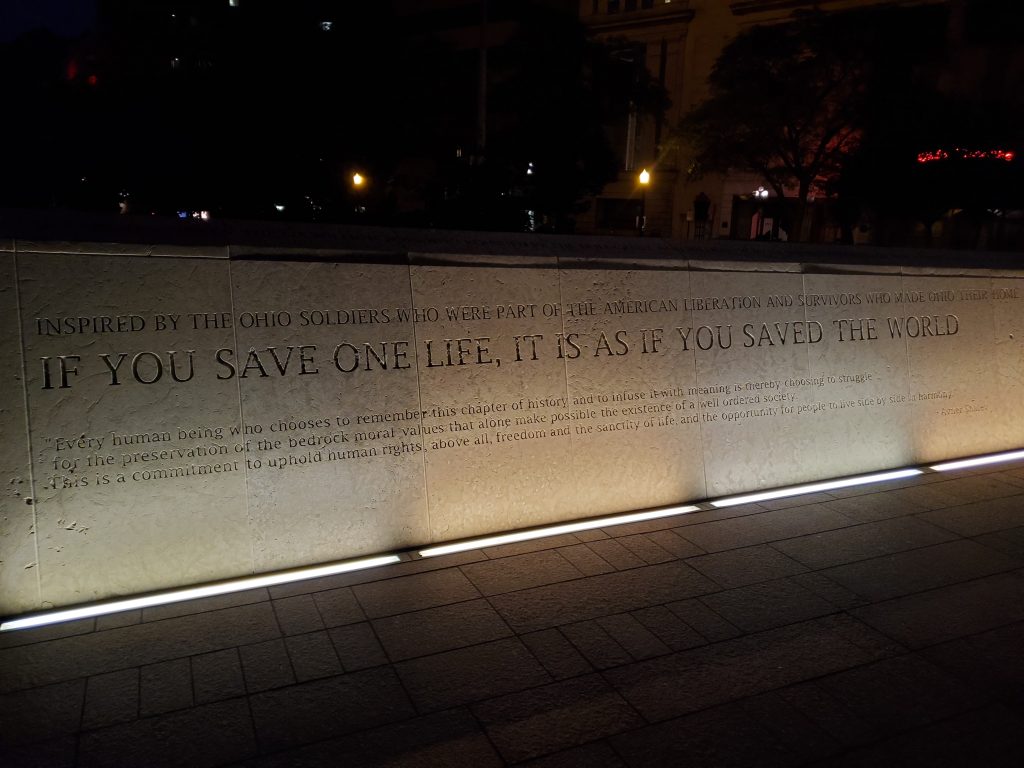
For more information on the memorial, see, http://www.ohiostatehouse.org/about/capitol-square/statues-and-monuments/ohio-holocaust-and-liberators-memorial. We particularly recommend the story of Michael Schwartz which is inscribed on the main part of the memorial.”
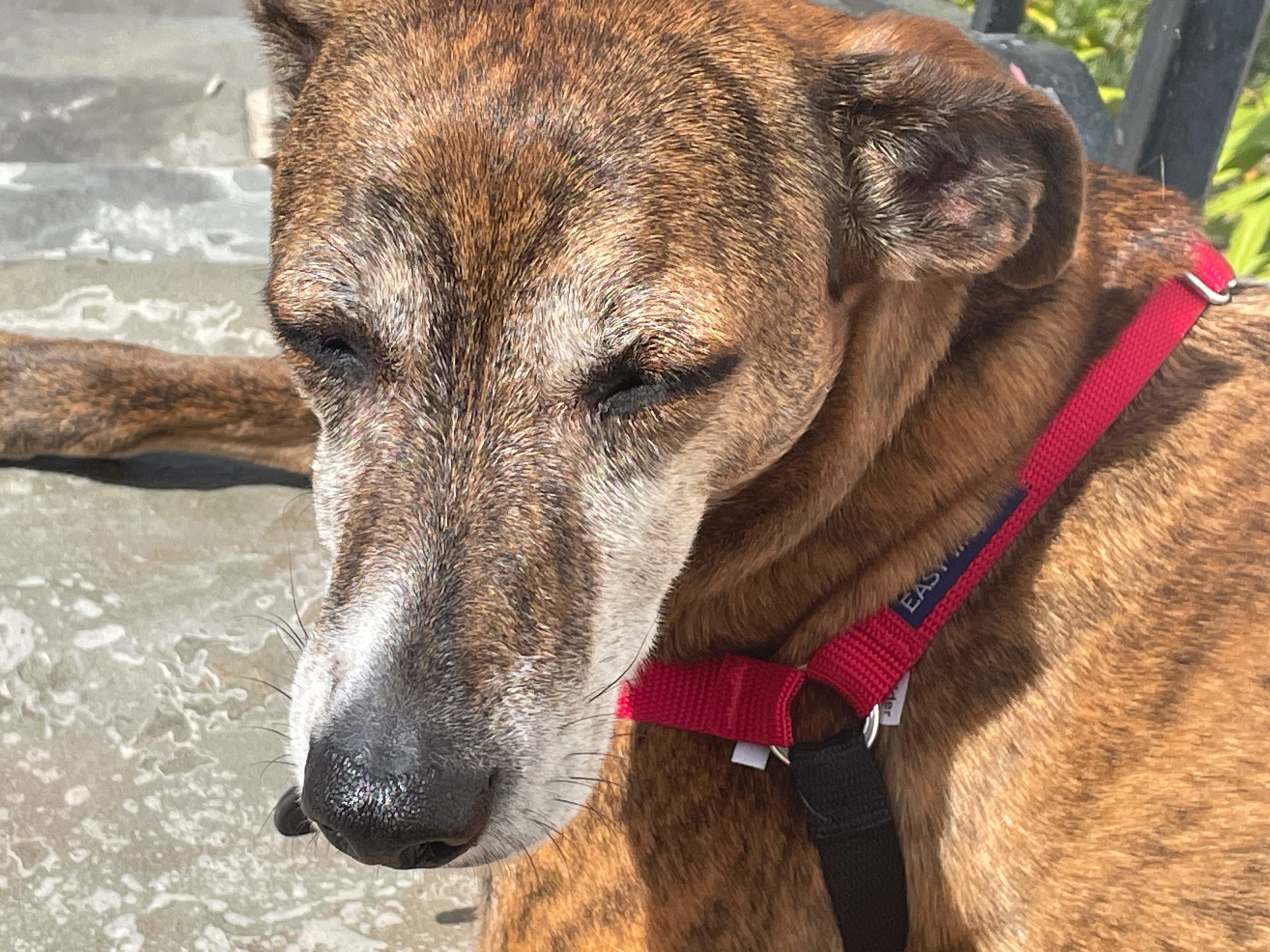
“The zealously nurtured attitude of literal credulity towards the oriental treasure of thought is in this case a lesser danger, as in Zen there are fortunately none of those marvelously incomprehensible words, as in Indian cults. Neither does Zen play about with complicated Hatha-yoga techniques, which delude the physiologically thinking European with the false hope that the spirit can be obtained by sitting and by breathing. On the contrary, Zen demands intelligence and will-power, as do all the greater things which desire to become real.”
Thus, no less a thinker than Carl Jung ends his foreword to D.T. Suzuki’s essays on Zen, first published in Japan during the “1914 War.” The eminent psychologist takes more than twenty pages to dance around an explanation of what the Japanese call Satori, translated imperfectly as “enlightenment” in most “Western” treatises. If he can’t do it, with all the usual qualifications, then how can a hopelessly European male living on the outskirts of Tysons do so in the 21st century?
Well, let’s start with a classic Wu- or Mu-anecdote about the dog. A monk once asked: “Has a dog Buddhist nature, too?” The Master answered: “Wu,” which Jung explains is “obviously just what the dog himself [in my case, herself] would have said in answer to the question.” It usually comes out as “woof.”
Without “making any recommendation or offering any advice,” Jung says that when Westerners begin to talk about Zen, he considers it his “duty to show the European where our entrance lies to that ‘longest of all roads’ which leads to satori, and what difficulties strew that path, which has only been trodden by only a few of our great men [sic]—perhaps as a beacon on a high mountain shining out in the hazy future.” It “can neither be captured in with skillful formulae nor exorcized by means of scientific dogmas, for there is something of Destiny clinging to it—yes it is sometimes Destiny itself, as Faust and Zarathustra show all too clearly.” Well, it’s not so clear to me since I don’t really understand German.
He goes on to warn that these two great works “are only on the border-line of what is comprehensible to the European” and “one can scarcely expect a cultured public who have only just begun to hear about the dim world of the soul to be able to form any adequate conception of the spiritual state of a man [sic] who has fallen into the confusions of the individuation process, by which term I have designated the ‘becoming whole’ (Ganzewerdung).”“Preoccupation with the riddles of Zen may perhaps stiffen the spine of the faint-hearted European, or provide a pair of spectacles for his short-sightedness, so that from his ‘gloomy hole in the wall,’ he may enjoy at least a glimpse of the world of spiritual experience, which until now has been shrouded in mist.”
Well, I can tell you that early in the morning on the Jones Branch Extender by the Capital One building, there are indeed mists to contemplate. And there are plenty of dogs being walked about by happy denizens all around Tysons. So, woof. Or should I say, “Wu”….?
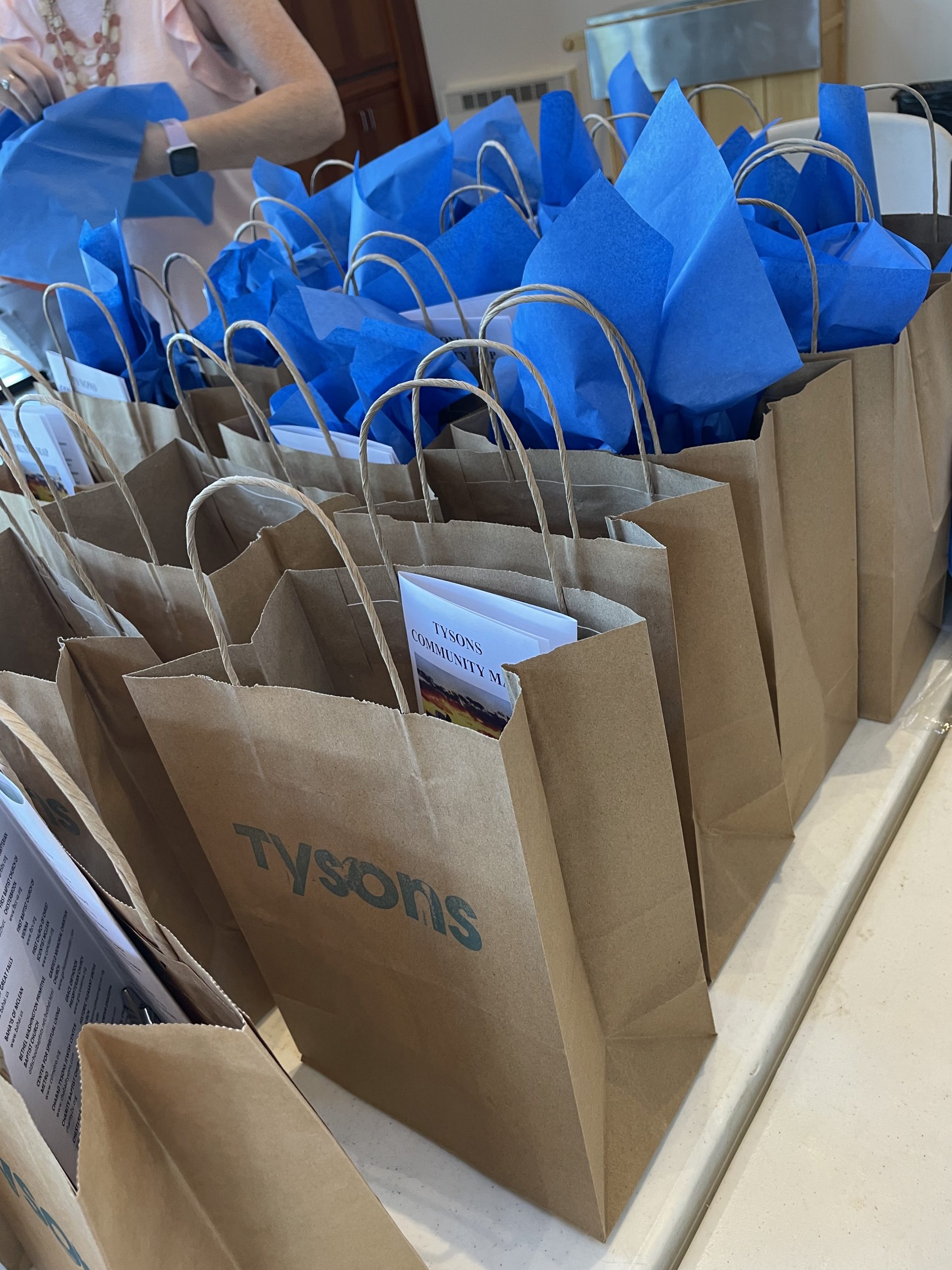
In December, when I started at Emmanuel Lutheran in Vienna as their associate pastor for evangelism and mission, I joined Tysons Interfaith right away. As someone entering my 10th year of ordained ministry, I have been part of a few ecumenical groups over the years, but this one is unique. As I attended our zoom meetings over the last year and participated in TI’s various discussions and forums, I’m so inspired by the work and passion that is happening in this group, despite the pandemic and its limitations.
At the end of July, I was finally able to meet some of the other members of Tysons interfaith in person, at Redeemer Lutheran in McLean to assemble “Welcome Bags” for new residents in Tysons. Our idea is to provide these bags to many of the major condominiums and apartment complexes in Tysons, to give away as new people move in. Inside each bag is a pen, magnet and lens cleaning cloth with the TI logo, a map of the community that includes a list of congregations in the surrounding area, a metro map, and a small package of tissues (because, pandemic!). We hope that new residents not only feel welcomed and connected to the community, but also learn that TI and these faith communities are ready resources. These bags will be going out in the next few weeks, to create a sense of connection and inclusion to the newcomers in our midst.
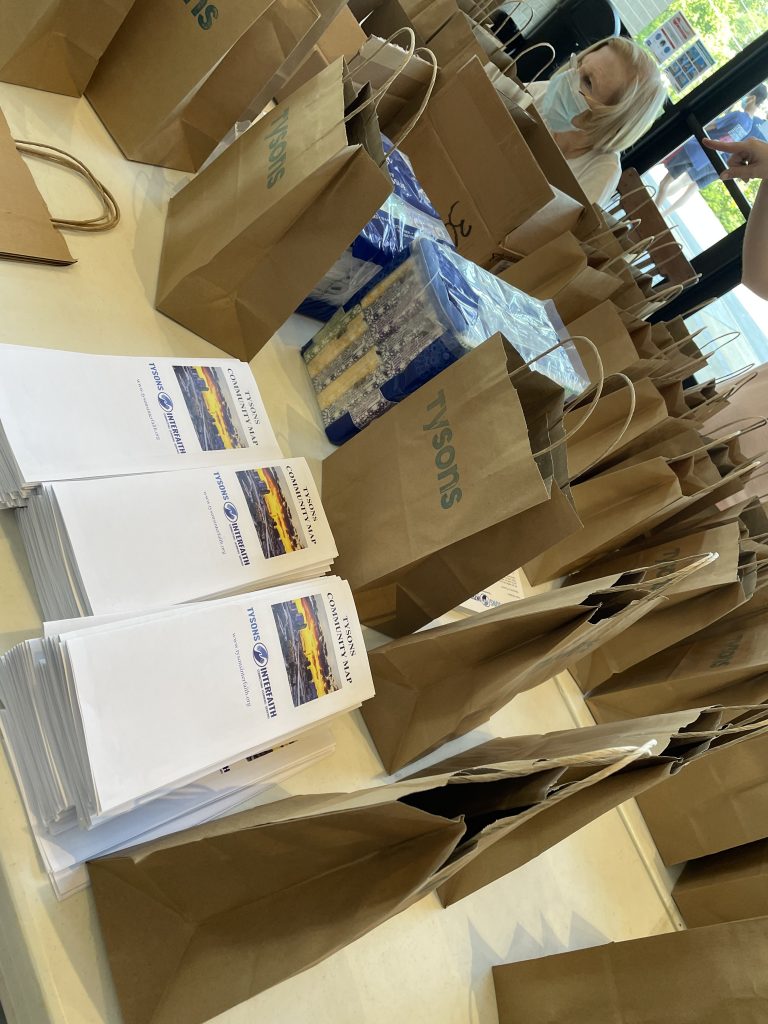
As someone still fairly new to NOVA, I’m so appreciative to have this group of passionate colleagues to work along with, and I am relieved that none of us are doing this alone. As a Christian and as a Lutheran, I believe that God is already present and at work in the community of Tysons, and God is continually inviting us alongside this work, as fellow participants. I’m thrilled to be along for the ride!
This blog post is the expressed opinion of its writer and does not necessarily reflect the views of Tysons Interfaith or its members.
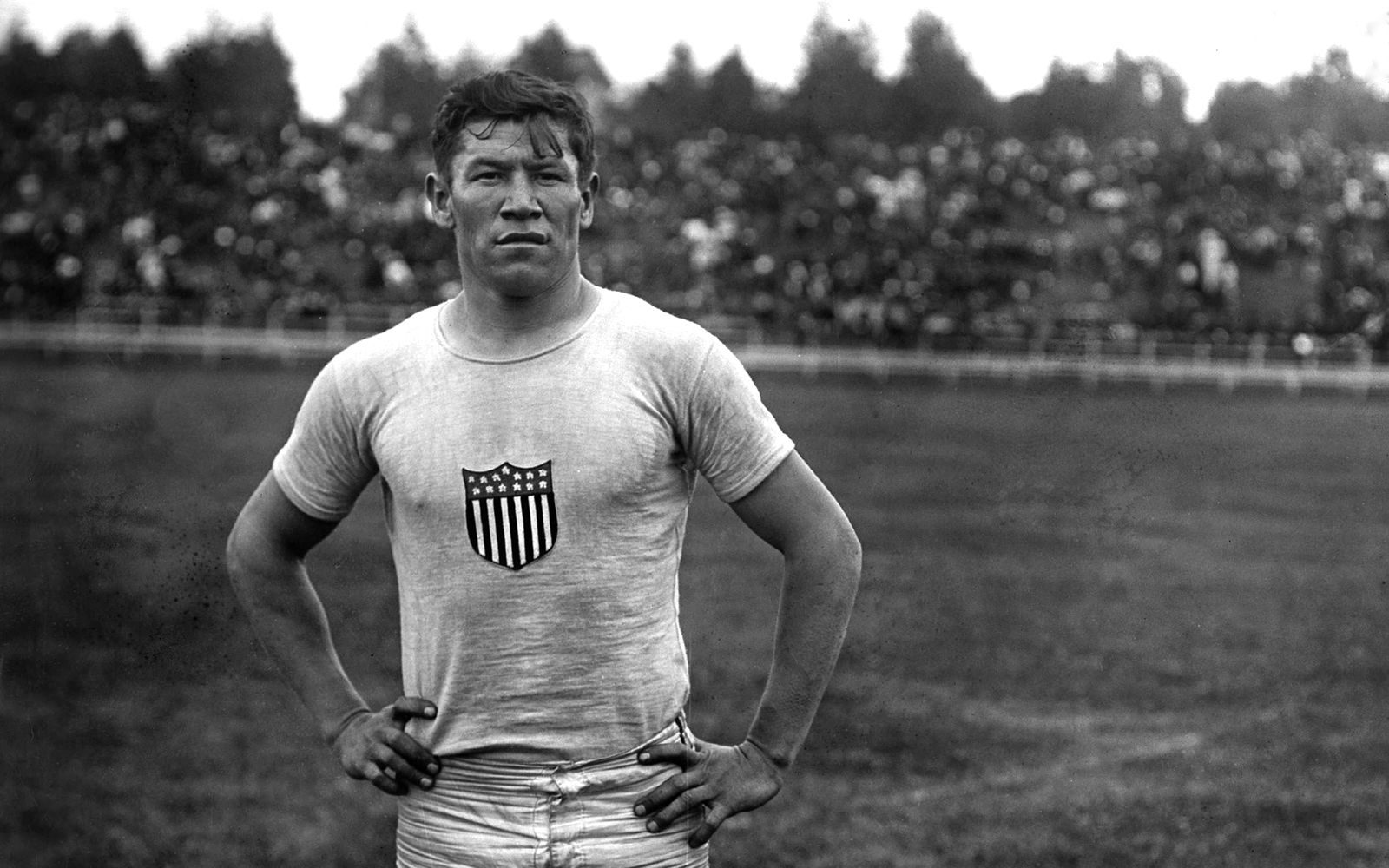
A recent BBC program reported on the controversy surrounding the “residence schools” established in Canada to “wring the Indian out of indigenous children.” Publicly funded, the schools were mostly established and run by the Roman Catholic Church and did not finally disappear until the 1990s. https://www.bbc.co.uk/programmes/m000xzdm
I first learned about the U.S. version of this program when I participated in the annual “Jim Thorpe Day” competition at the Army War College in Carlisle, PA, the site of Thorpe’s on-again, off-again alma mater (he had trouble staying in school). Thorpe became an Army legend, possibly America’s greatest Olympic and professional sports champion ever and, lesser well known, a successful Hollywood actor. https://www.vice.com/en/article/z4d74a/a-thanksgiving-reminder-jim-thorpe-is-a-native-american-hero
Despite a bit of European ancestry, Thorpe was generally regarded as wholly American Indian, which made him both a curiosity and an advertisement for assimilationist policy. The founder and head of the Carlisle school, for example, believed that Native Americans must convert to Christianity and seek an education to prepare for success in the dominant culture. He once wrote that the U.S. government must “kill the Indian…to save the man.” His hubris, and a lack of proper oversight led inevitably to cases of physical, mental, and sexual abuse, only some of which have been belatedly prosecuted. Run by secular staff from the BIA (Bureau of Indian Affairs), Protestant religious organizations, or Catholic religious orders and parishes, the schools were part of what many call a program of “cultural genocide.”
Thorpe did not talk about this, but during his Hollywood career – he appeared in more than 70 films – he earned the title “Akapamata,” which in his Sac and Fox heritage means “caregiver.” His experience as co-founder and first president of what became the National Football League came in handy when he approached the BIA for a grant to launch an “Indian Center” in Los Angeles.
Together with a Native-American partner, Cecilia Blanchard, Thorpe formed what Blanchard’s great-granddaughter called a ‘Welcome Wagon’ for the Native peoples streaming in from all over. https://www.americanindianmagazine.org/story/akapamata-forgotten-hollywood-legacy-jim-thorpe. They would match the new arrivals with casting calls and auditions and, unwelcome in the city, organize Saturday-night potluck gatherings on the outskirts of town where the women used a traditional “dinner fire” to cook the game the men cleaned. All this eventually led to the Native American Actors Guild, formed because the Screen Actors Guild was even less welcoming than the Angelinos.
In the words of Blanchard’s great-granddaughter: “The industry was racist. They were portraying a vanishing people and a dying culture, and they were portraying it over and over again. That wore on the Natives’ psyche. That wore on their hearts. We are a proud people. We have worked hard to survive. Jim realized this and knew he had the best agency to create change. He tried to offer them an opportunity to be more than society was telling them they were going to be…. He went to his grave fighting for equal pay for Native actors and decent health insurance, especially for the stuntmen! Jim’s valiant effort laid the early groundwork for the benefits enjoyed today by indigenous people in the industry where we are still trying to crack the glass ceiling of film and media and taking back control of who we are as a people.”
Reflecting on the life and legacy of Jim Thorpe, I think he was an American hero on the order of Jessie Owens and Jackie Robinson, a man who could be embraced by Americans of any background. He is revered by the Army because he adopted its values of loyalty to service and country, action on the field of battle, and the performance of great deeds. He was embraced by most of his countrymen despite his Native American background and ongoing controversy and contradictions. These include his lifelong battle with alcoholism; his fraught marital life; the infighting among his heirs over whether he should be buried in the Pennsylvania town that took his name or back in Oklahoma on his ancestral lands; and the embarrassment of having the International Olympic Committee first strip him of his track and field medals because they found out he had played semi-professional sports and only posthumously reversing their decision. He had matchless God-given talents, but he also benefitted from the unique teaching and coaching that helped mold his individual talents into greatness. It is impossible to ascertain whether our efforts to wring the Indian out of him resulted in Jim Thorpe being more Christian and “American” than what he most certainly was: a hero of the Sac and Fox nation.
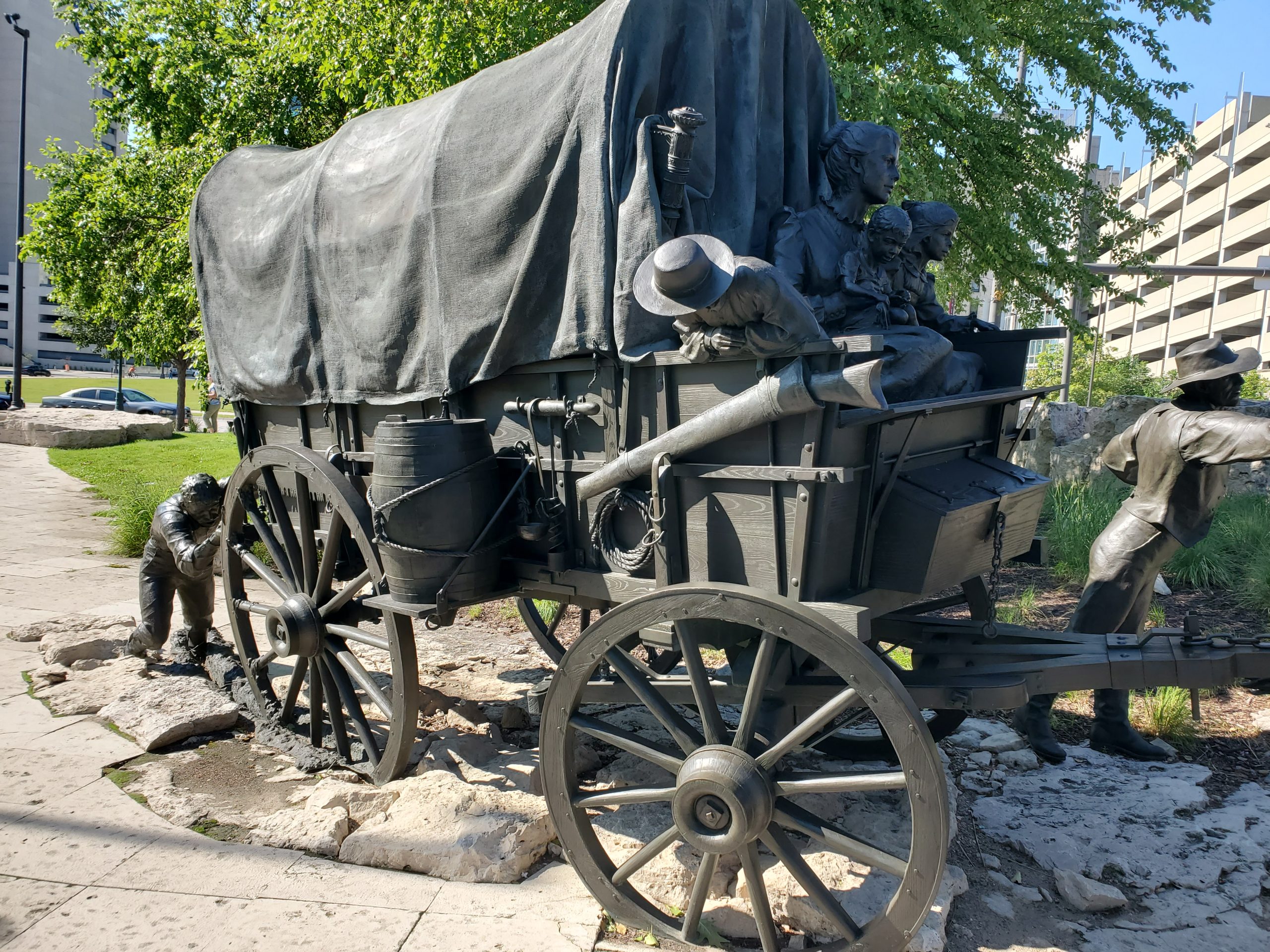
Every July 24, the State of Utah celebrates Pioneer Day, a major state holiday. Pioneer Day commemorates July 24, 1847, when an early contingent of Mormon pioneers, led by Brigham Young, entered what is now the Salt Lake Valley. They had made a long trek to find a place of refuge from religious persecution. The holiday is marked in many Utah cities and towns by a parade with pioneer-themed floats.
On a recent road trip through the West, we saw some key points along the trail that led to the settlement in Utah. The first was Winter Quarters (current day Omaha), the embarkation point where the Mormon pioneers spent two winters preparing for the trek west. Downtown Omaha has an extensive monument to the Mormon and other pioneers that went west in wagons, on horses, or on foot pulling handcarts. There is also a cemetery where 600 of the 4,000 Mormon pioneers who spent those difficult winters are buried – they didn’t make it west. Overlooking the cemetery is a powerful bronze sculpture commemorating the sacrifices and faith of those pioneers – by sculptor Avard Fairbanks, who coincidentally sculpted the busts of George Washington that frame the campus of George Washington University. The sculpture is placed directly over the graves of an unknown child and seven other pioneers.
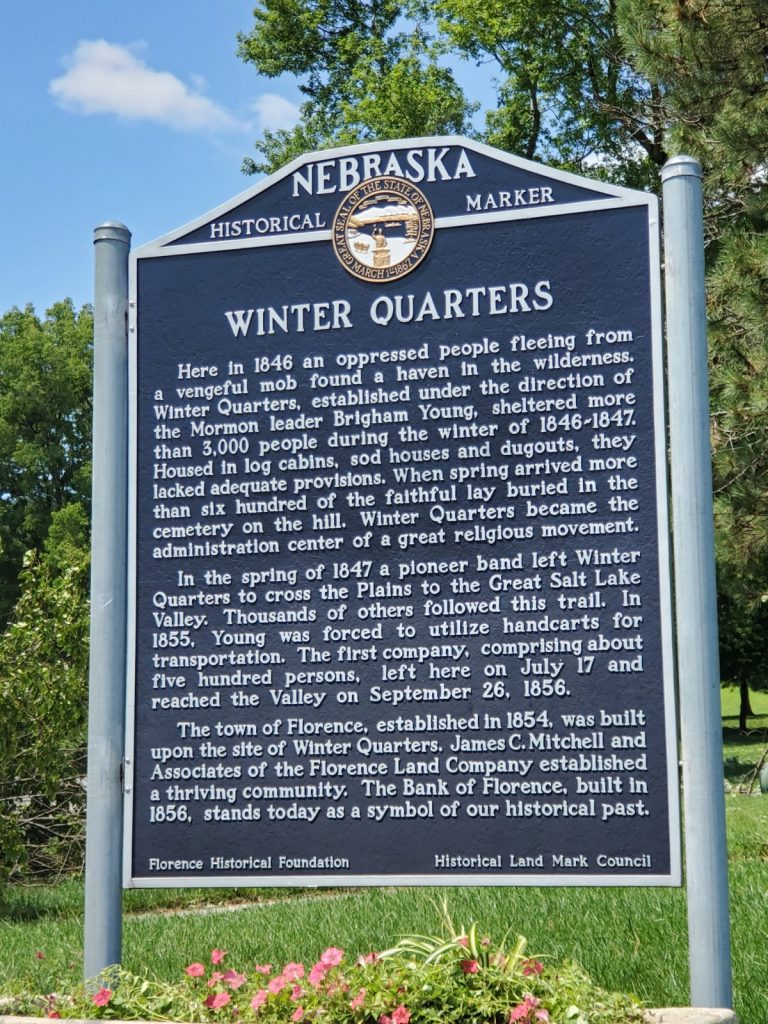
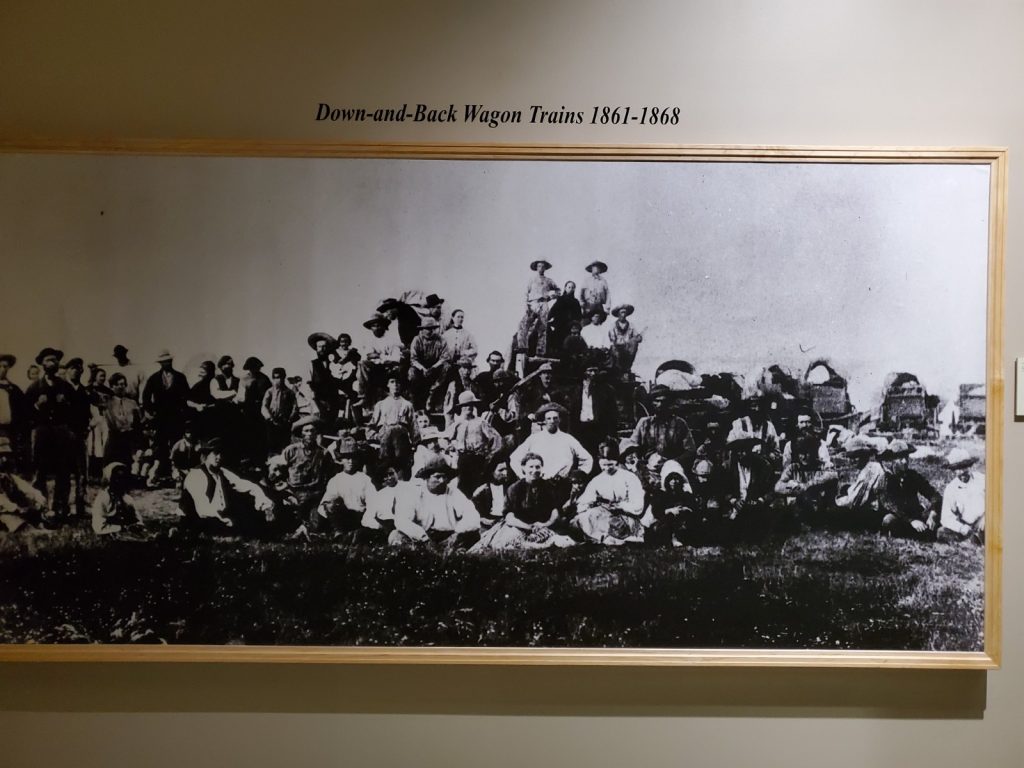
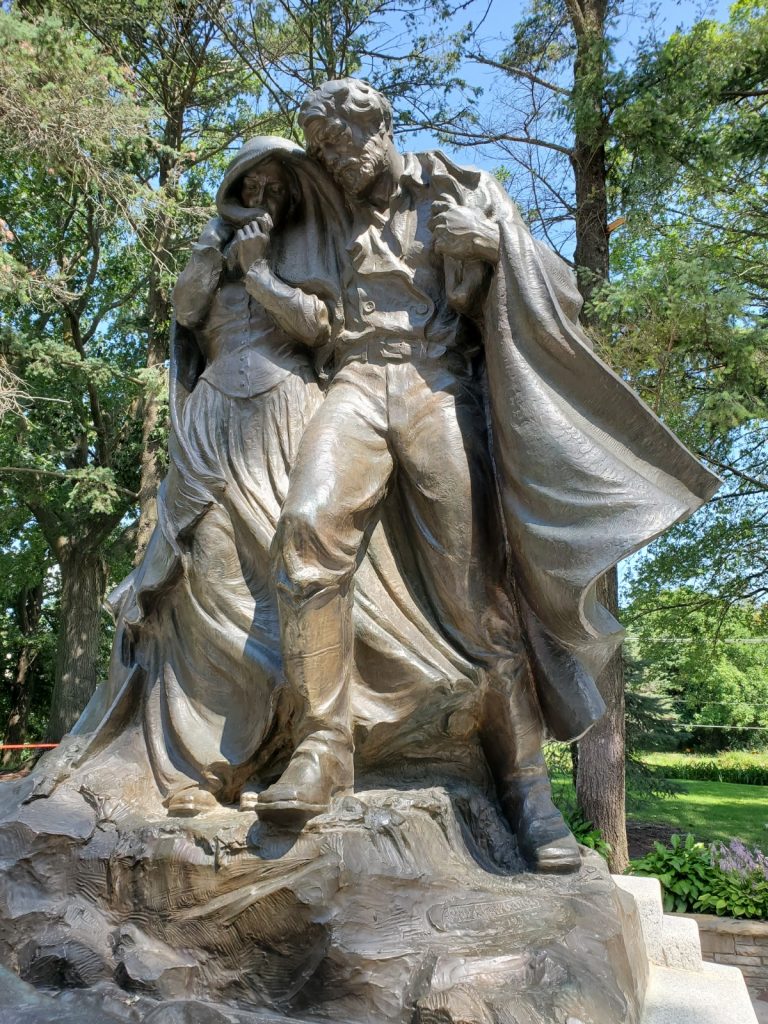
About 450 miles to the west is Chimney Rock in the North Platte River Valley. Not only is it the most recognizable landmark on the Mormon Trail (and the Oregon Trail that parallels it) because of its unique shape, it also marks the end of the flat part of the trail and the beginning of the mountainous terrain that culminates in the Rocky Mountains. Near Chimney Rock is a grave marker for Rebecca Winters, a mother of 4 who died from cholera along the trail. It was very moving to see that a family friend had taken the effort to carve her name in an old wagon wheel to memorialize her sacrifice and her importance as an individual. Her descendants later added a more traditional grave marker.
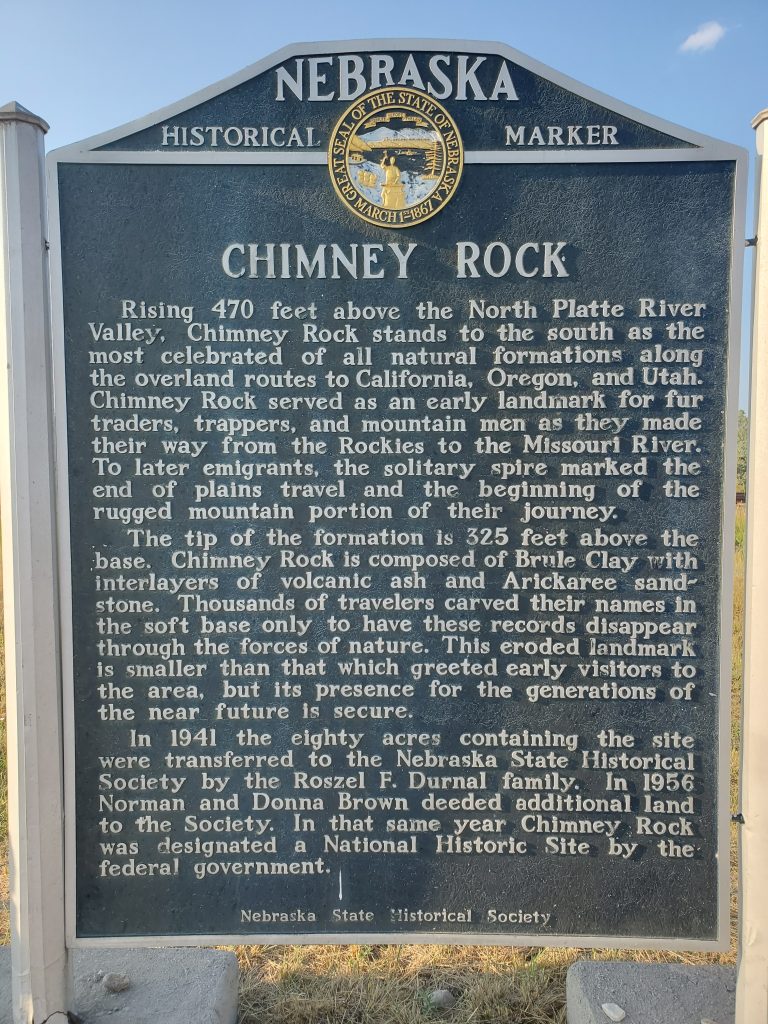
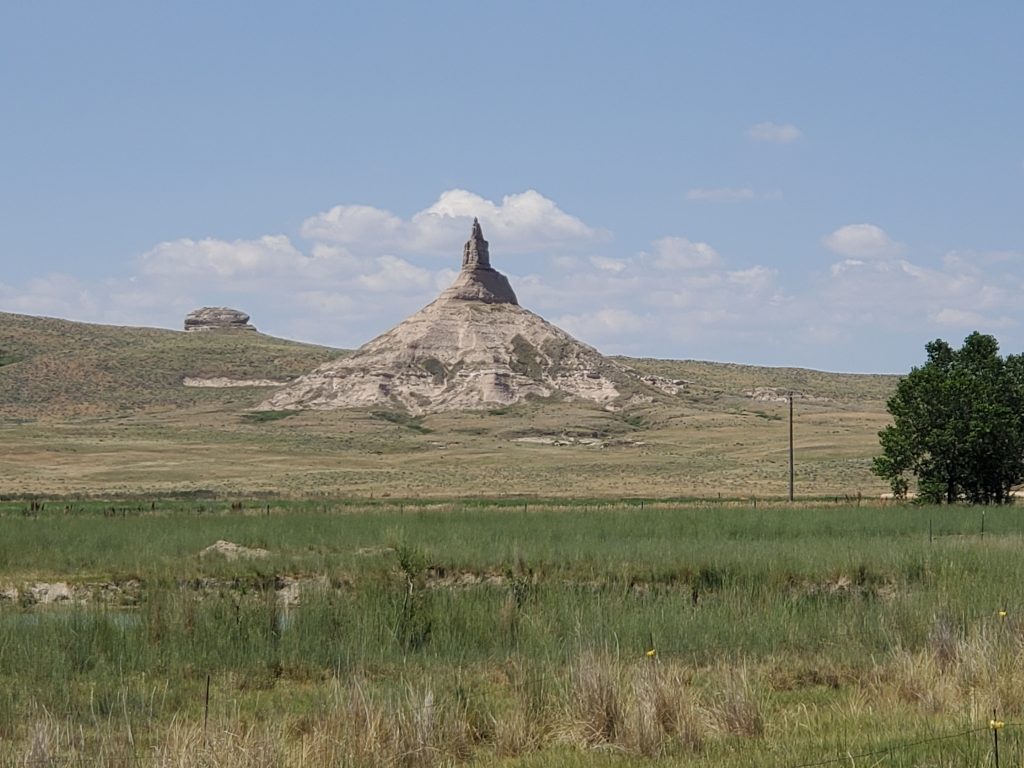
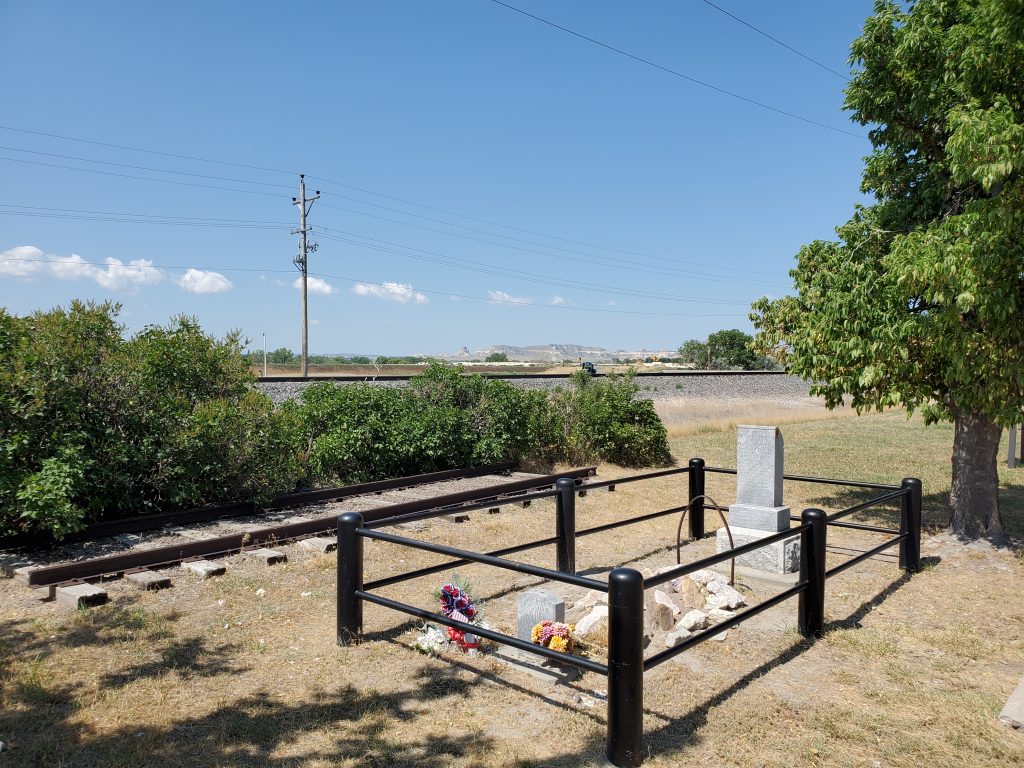
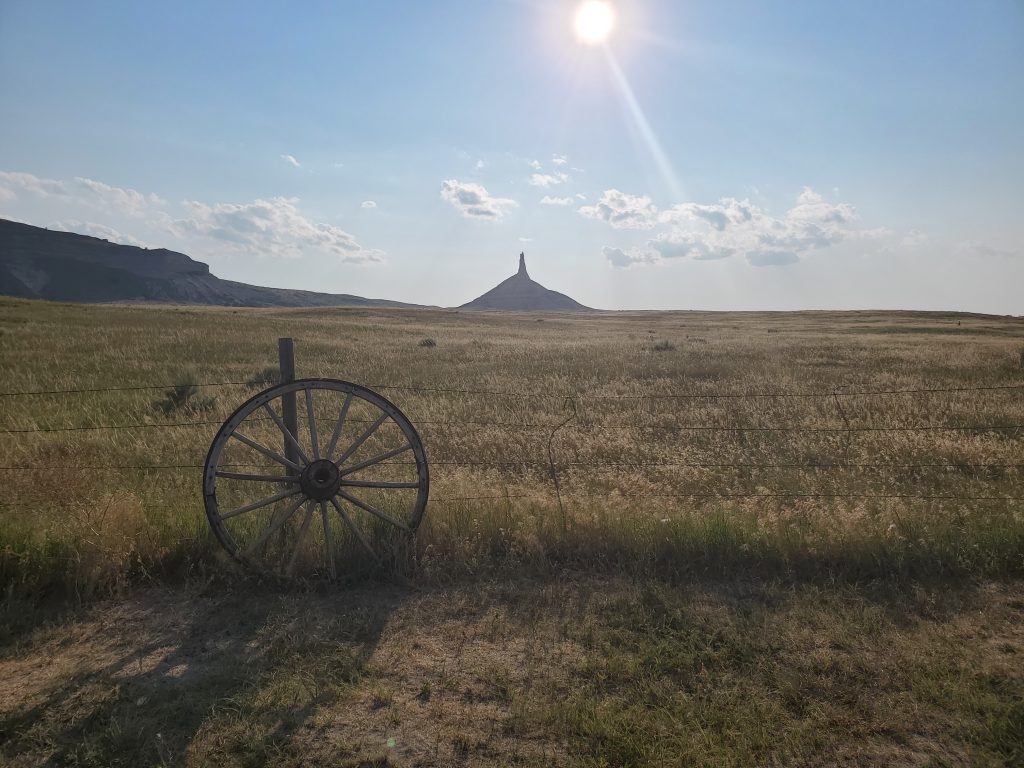
The Mormon Trail is sacred ground for members of our church, the Church of Jesus Christ of Latter-day Saints. Both of us have ancestors who were among the 70,000 that went west, through great hardship, to find a place of peace to live and worship. What motivated these pioneers to make this dangerous trek? As one of our church leaders summarized a few years ago:
“The foremost quality of our pioneers was faith. With faith in God, they did what every pioneer does – they stepped forward into the unknown: a new religion, a new land, a new way of doing things . . . Two companion qualities evident in the lives of our pioneers, early and modern are unselfishness and sacrifice.”
This blog post is the expressed opinion of its writer and does not necessarily reflect the views of Tysons Interfaith or its members.

There is lots of summer left, and with it — opportunities to get out on a summer’s evening and enjoy free music in and around Tysons! Thursday evenings are particularly hopping, with a number of concert series offerings:
- The Boro Summer Live Music Series featuring local artists runs Thursday evenings through September 9 from 5:30 pm to 8:00 pm on the Upper Promenade near Boro Park in Tysons (8350 Broad Street, Tysons). Information about this series and other happenings at the Boro can be found here.
- Tysons Corner Center presents The Plaza Live! through October on Thursdays from 4:00 pm to 7:00 pm and on Saturdays from 2:00 pm to 7:00 pm on the Plaza at Tysons Corner Mall. Additional information can be found here.
- The Nottoway Nights Concert Series are held on Thursday evenings in July and August at 7:30 pm at Nottoway Park (9537 Courthouse Road, Vienna). Bring a blanket or lawn chairs. Additional information and a list of performers can be found here.
- The City of Falls Church is again presenting its Concerts in the Park at Cherry Hill Park, 312 Park Avenue, Falls Church on Thursday evenings from 7:00 pm – 9:00 pm. Blankets or lawn chairs suggested. Additional information can be found here.
And while not free, there is something going on almost every night of the week at nearby Wolf Trap, where you can reserve a seat or bring a blanket and a picnic dinner. Their calendar can be found here.
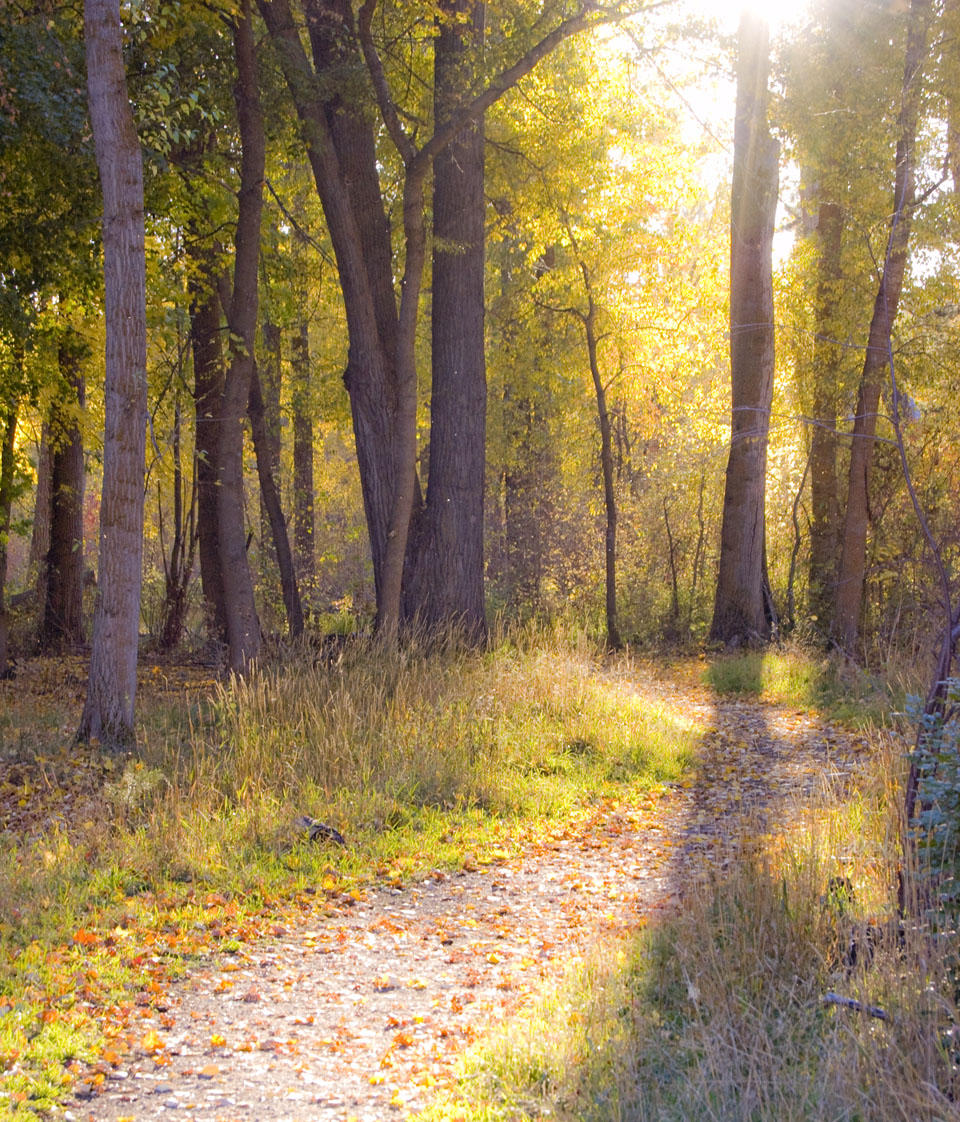
I’m finding that the transition out of COVID is stressful for me. And if conversations I’ve had are any indication, the transition is stressful and for many of us. We are in that funny time where we are working toward freedom (our Reston family had our first meal together in an actual restaurant last night!) but we aren’t all the way there yet.
One word for times of transition is liminal, which means occupying a position at, or on both sides of, a boundary or threshold. Liminal times can be exciting, but they can also be stressful. Figuring out what life looks like as we cross a boundary can be invigorating. It can also be exhausting. I was thinking about this particular liminal time when I read a reflection written by one of the Assisting Bishops in the Episcopal Diocese of Virginia, Bishop Porter Taylor. He shared this poem by Wendell Berry called “The Peace of Wild Things.”
When despair for the world grows in me
and I wake in the night at the least sound
in fear of what my life and my children’s lives may be,
I go and lie down where the wood drake
rests in his beauty on the water, and the great heron feeds.
I come into the peace of wild things
who do not tax their lives with forethought
of grief. I come into the presence of still water.
And I feel above me the day-blind stars
waiting with their light. For a time
I rest in the grace of the world, and am free.
In this liminal time, I find that I am needing the peace of wild things. I need time surrounded by nature. I need quiet and rest. And I certainly need to remind myself not to be taxed with the forethought of grief and anxiety.
I hope that you are able to find times and spaces for refreshment, whatever that looks like for you. Can you take a walk in nature? Can you watch the birds from a chair on your porch? Does your dog, your cat, or your gerbil make you smile? Where can you rest in the grace of the world and be free?
This blog post is the expressed opinion of its writer and does not necessarily reflect the views of Tysons Interfaith or its members.
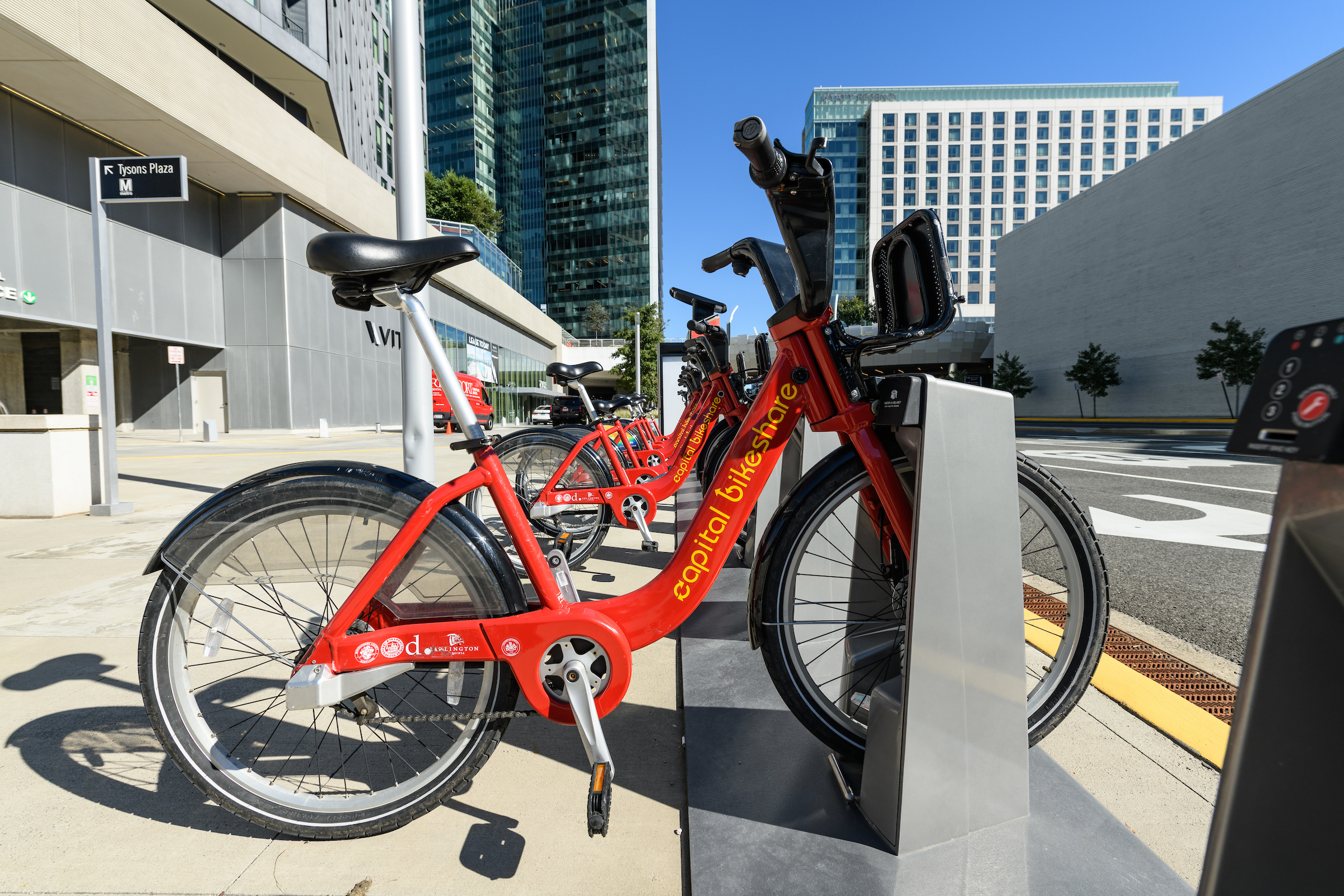
As I wrote in an earlier post, Tysons can be a good if not great place for biking and hiking. But when Fairfax County shuts down one northbound lane of Tysons Boulevard to vehicular traffic beginning on July 6, you must at least try one time for yourself. Capital Bike Share station map
The Bike Share bikes are heavy, so if you procure one, you will go slow, not such a bad thing even in these pandemic times. Tysons Boulevard is not as busy as International Drive but believe me it can get a bit of traffic. So, closing it off to allow pedestrians and cyclists is a good tradition to have.
Let me remind you that in addition to access to Tysons Galleria, you can easily access one of the few trails in Tysons. Even before you enter the closed portion of the street, take a right down West Branch and then enter the trail on your left. It will take you to the (artificial turf) soccer field.
